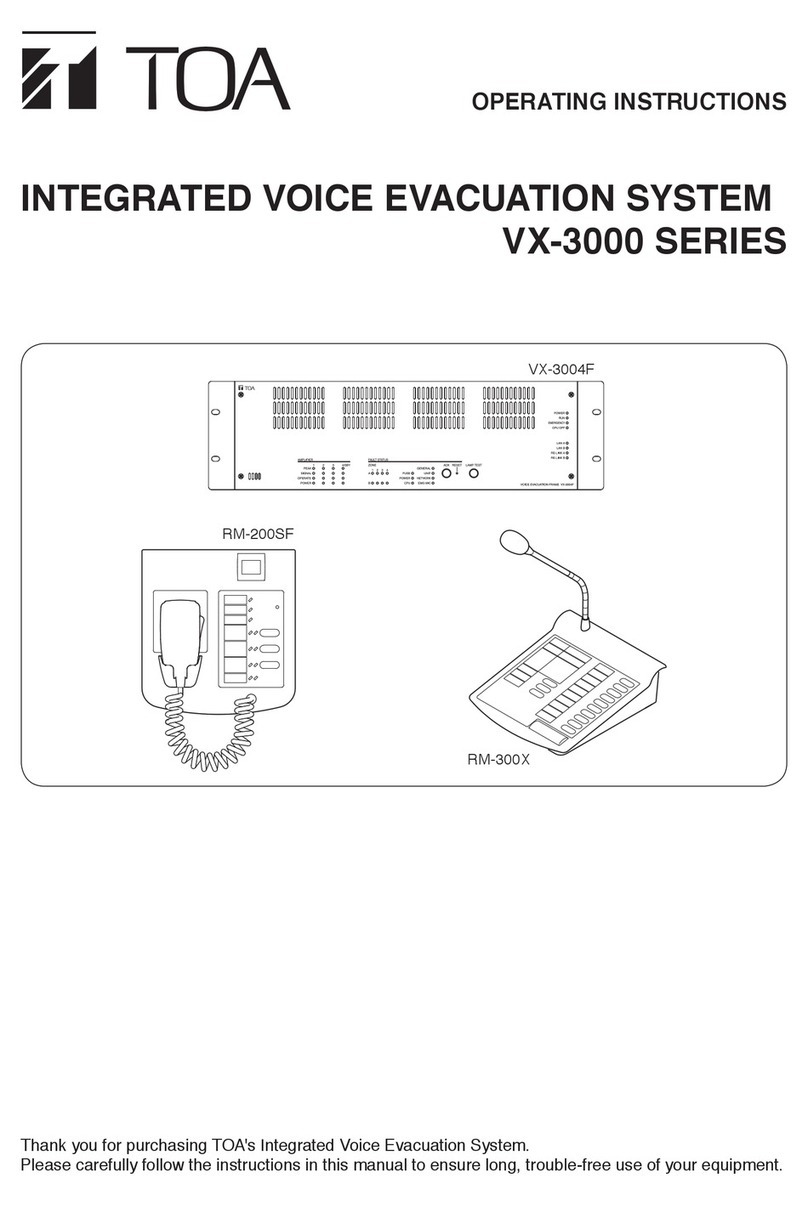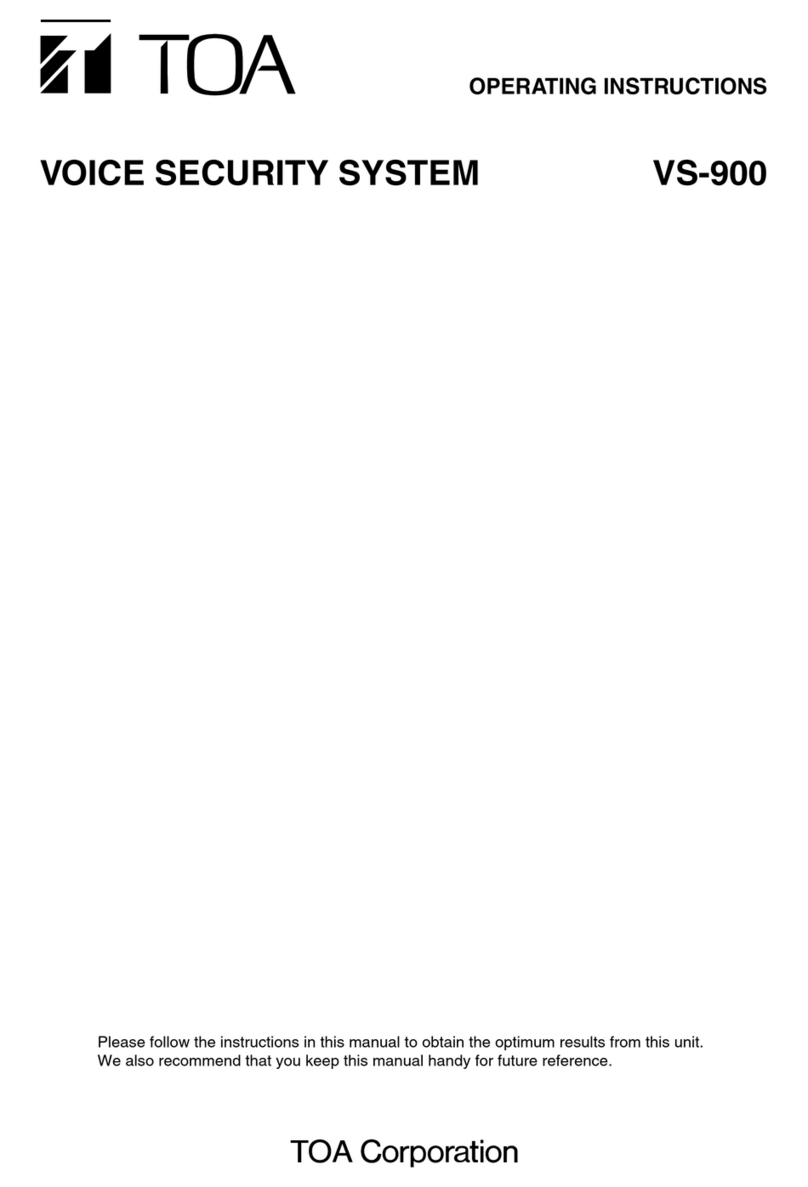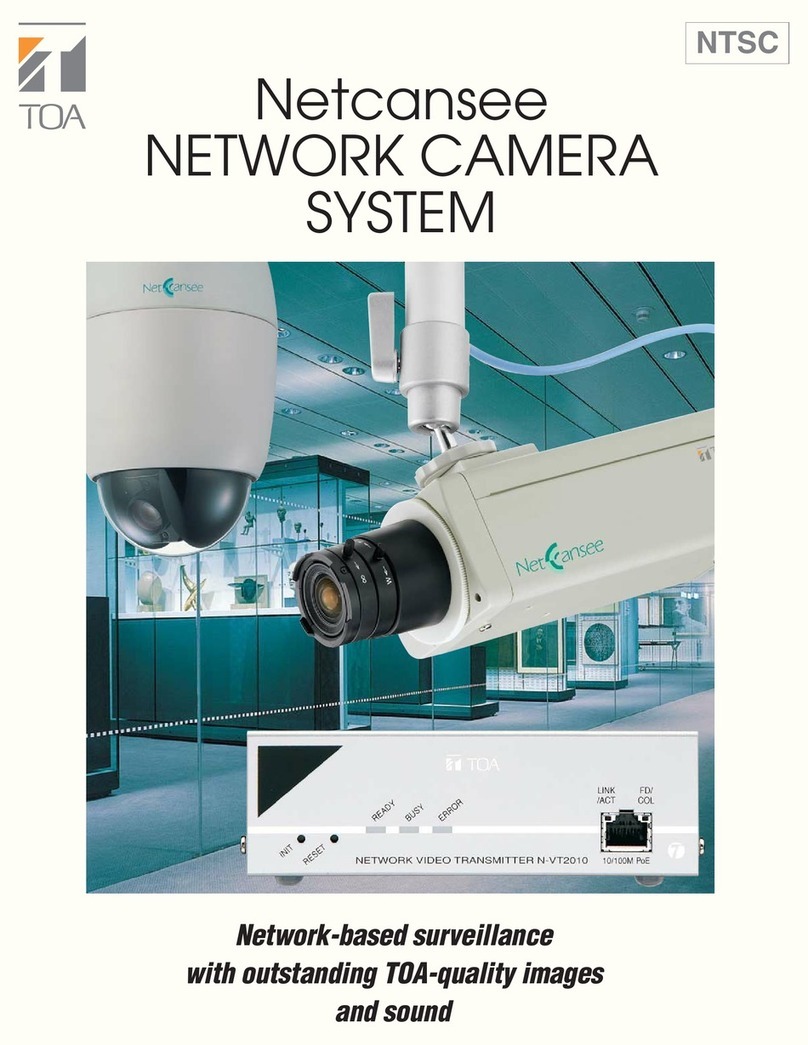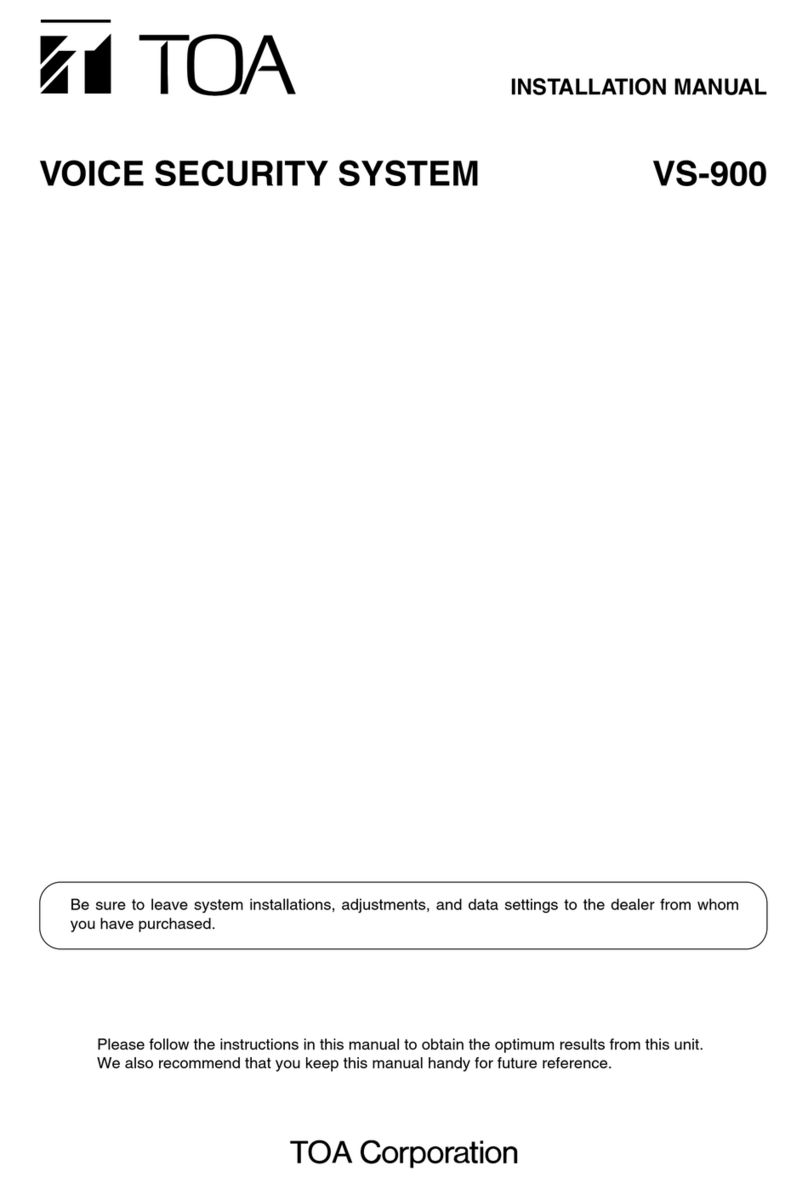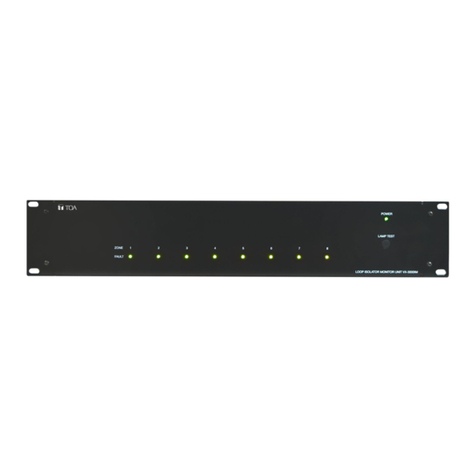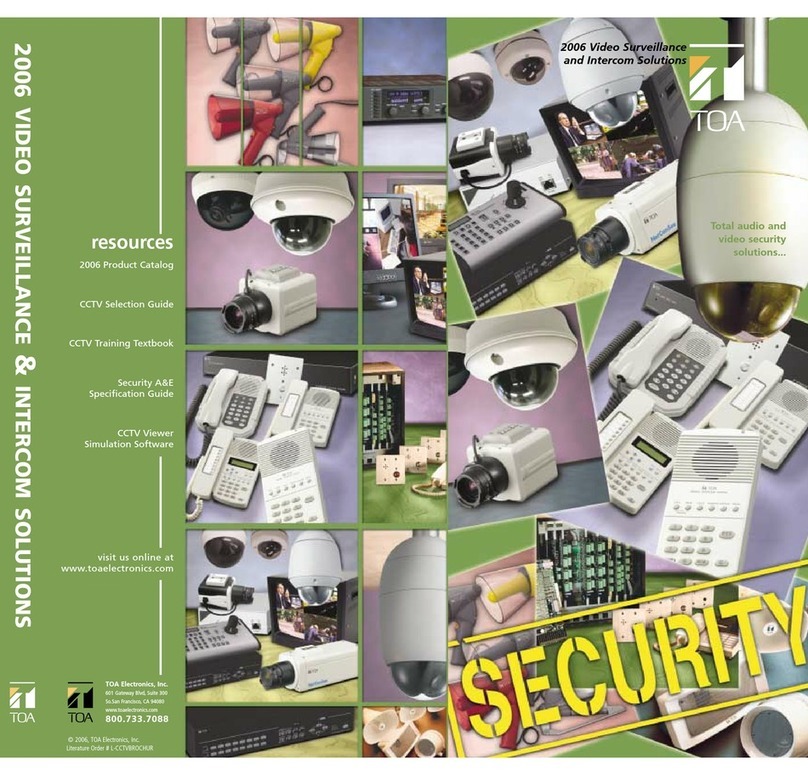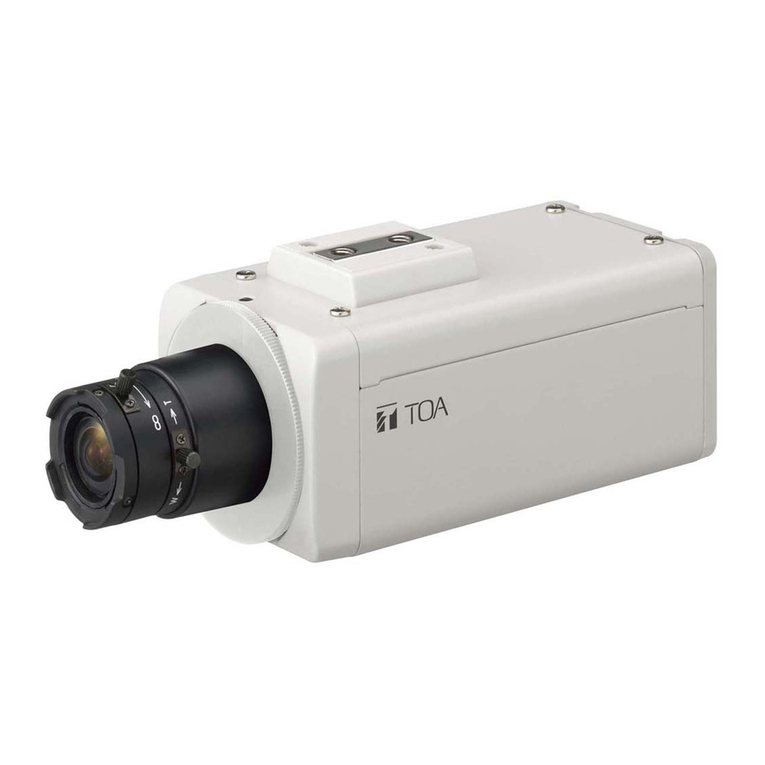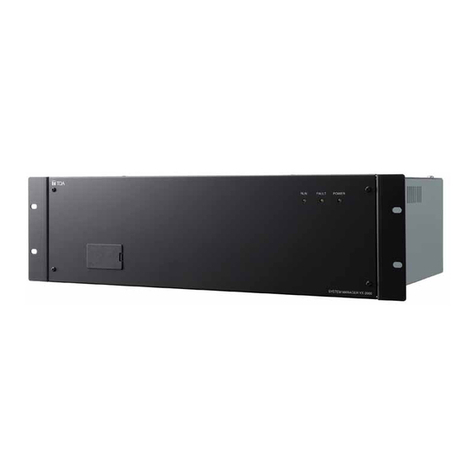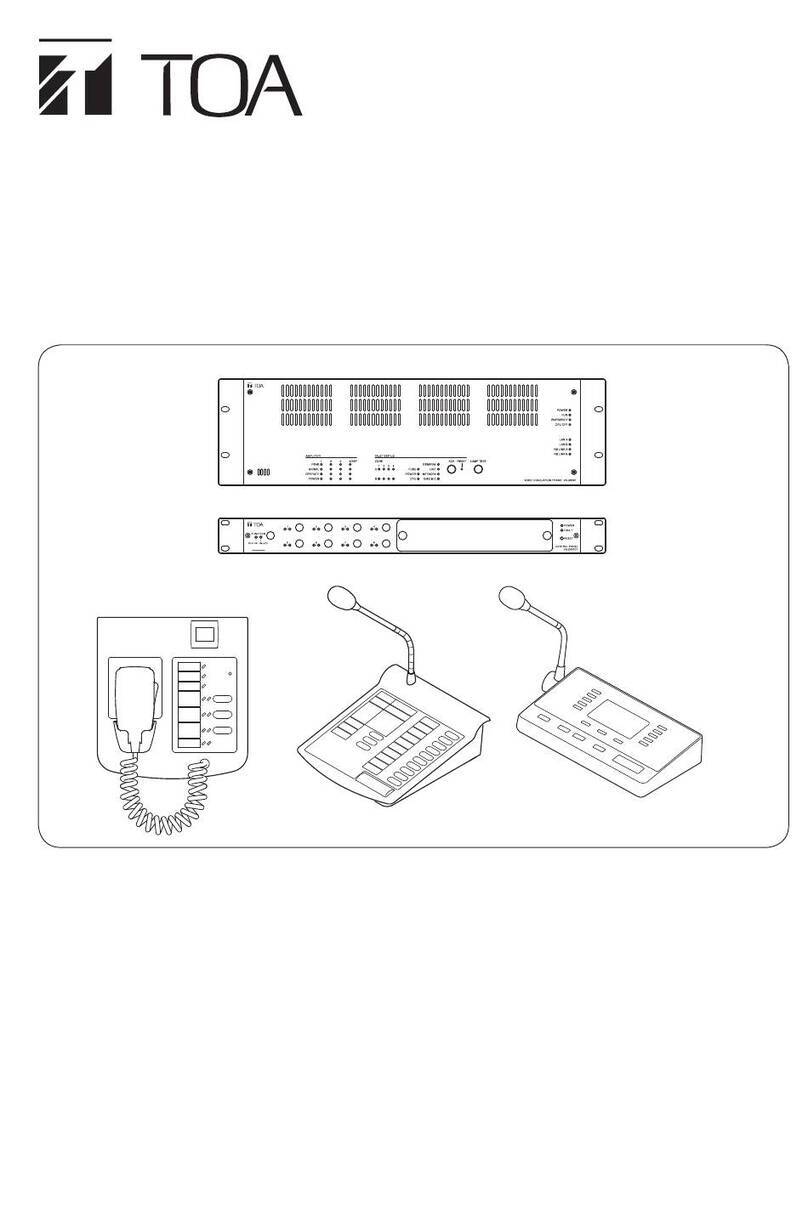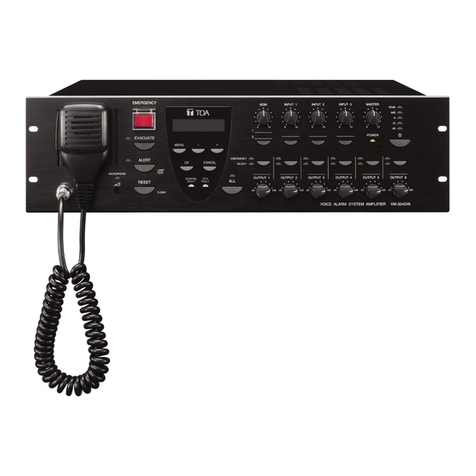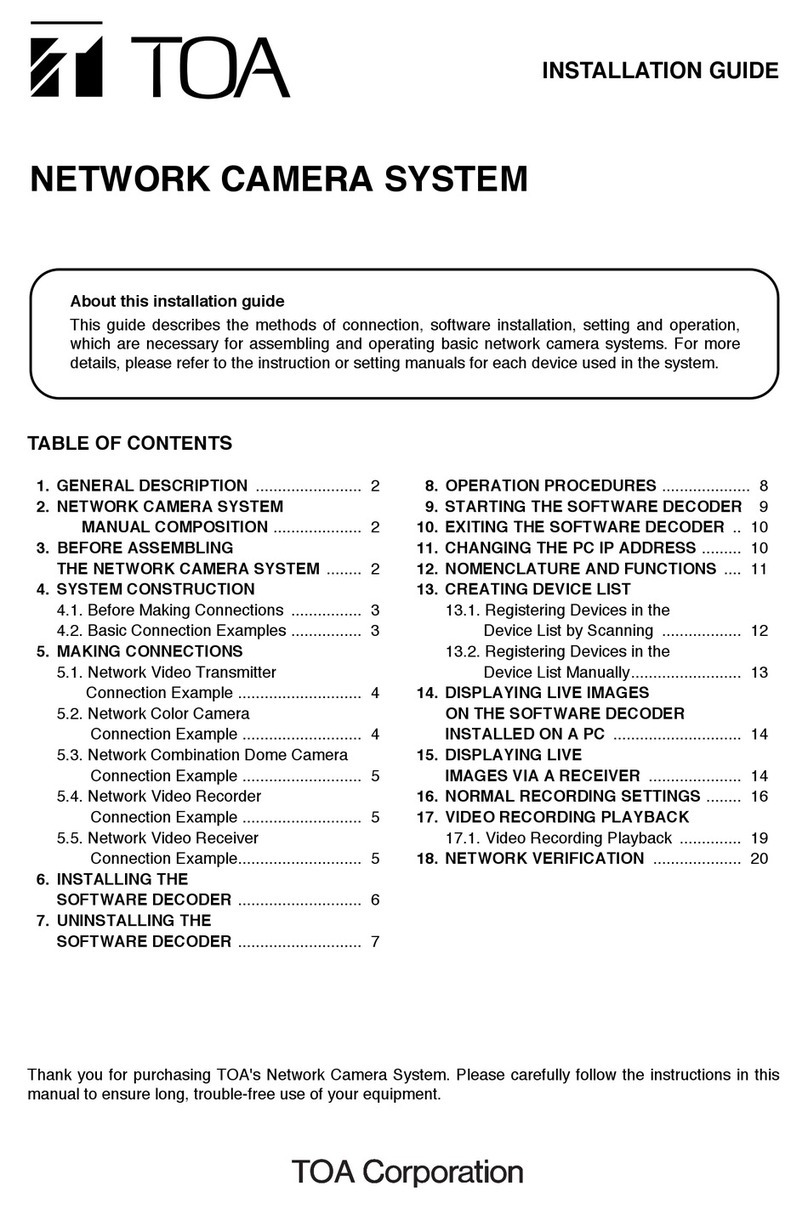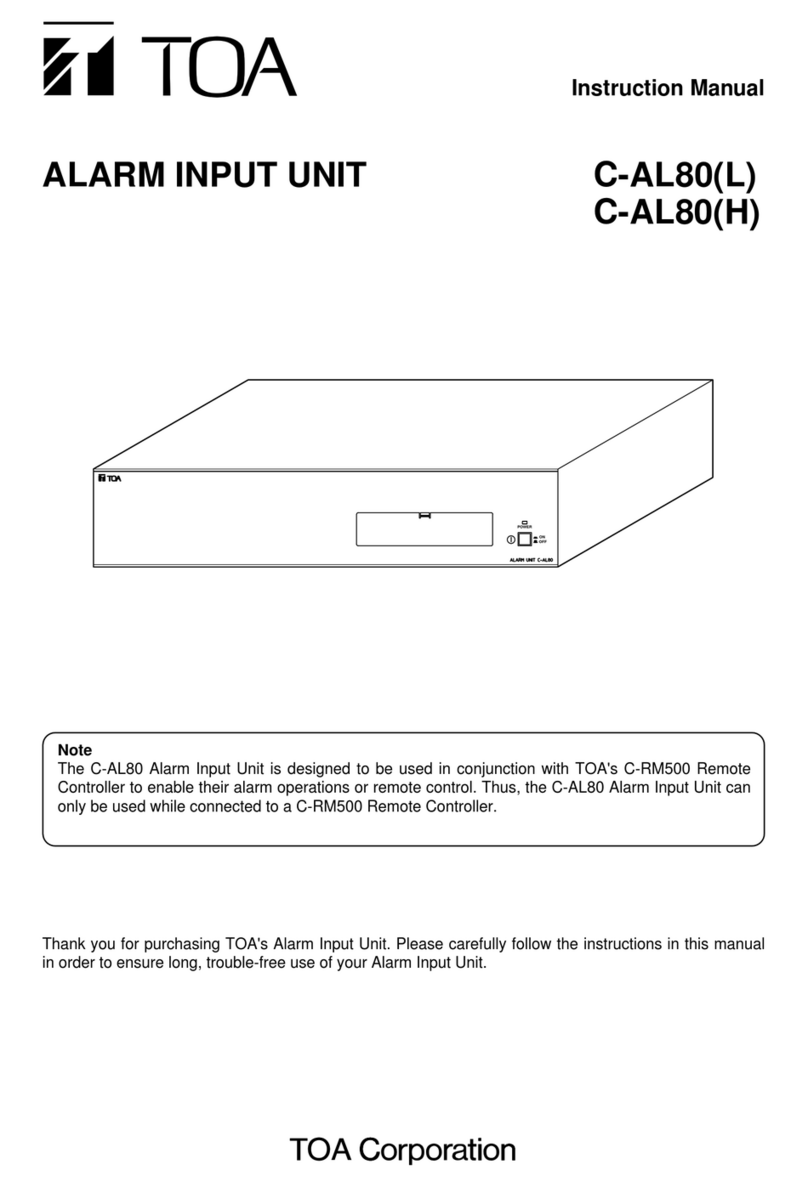
Chapter 1 NOTE
1. SAFETY PRECAUTIONS
• Before installation or use, be sure to carefully read all the instructions in this section for correct and safe
operation.
• Be sure to follow all the precautionary instructions in this section, which contain important warnings and/or
cautions regarding safety.
• After reading, keep this manual handy for future reference.
• This equipment is not suitable for use in locations where children are likely to be present.
• An equipment installer and the person in charge of maintenance are required to fully understand the functions
and structure of this unit, then be aware of electrical and mechanical risks before work.
Before starting work, he or she should take possible measures to prevent occurrence of such risks.
Be sure to contact your nearest TOA dealer if you need to confirm unclear points about risk sources of this
unit.
Safety Symbol and Message Conventions
Safety symbols and messages described below are used in this manual to prevent bodily injury and property
damage which could result from mishandling. Before operating your product, read this manual first and
understand the safety symbols and messages so you are thoroughly aware of the potential safety hazards.
When Installing the Unit
• Do not expose the unit to rain or an environment where it may be splashed by water or other liquids, as doing
so may result in fire or electric shock.
• Since the unit is designed for indoor use, do not install it outdoors. If installed outdoors, the aging of parts
causes the unit to fall off, resulting in personal injury. Also, when it gets wet with rain, there is a danger of
electric shock.
• Use the unit only with the voltage specified on the unit. Using a voltage higher than that which is specified may
result in fire or electric shock.
• Do not cut, kink, otherwise damage nor modify the power supply cord. In addition, avoid using the power cord
in close proximity to heaters, and never place heavy objects -- including the unit itself -- on the power cord, as
doing so may result in fire or electric shock.
• (Applicable to RM-200SF, RM-300X, RM-320F, and RM-210F only)
Avoid installing or mounting the unit in unstable locations, such as on a rickety table or a slanted surface.
Doing so may result in the unit falling down and causing personal injury and/or property damage.
• (Applicable to RM-200SF, RM-300X, RM-320F, and RM-210F only)
Install the unit only in a location that can structurally support the weight of the unit and the mounting bracket.
Doing otherwise may result in the unit falling down and causing personal injury and/or property damage.
When the Unit is in Use
• Should the following irregularity be found during use, immediately switch off the power, disconnect the power
supply plug from the Ac outlet and contact your nearest TOA dealer. make no further attempt to operate the
unit in this condition as this may cause fire or electric shock.
· If you detect smoke or a strange smell coming from the unit
· If water or any metallic object gets into the unit
· If the unit falls, or the unit case breaks
· If it is malfunctioning (no tone sounds)
•To prevent a fire or electric shock, never open nor remove the unit case as there are high voltage components
inside the unit.
(Applicable to RM-200SF and RM-300X only)
Refer all servicing to qualified service personnel.
Idicates a potetiall hazardous situatio which, if ishadled, could
result i death or serious persoal ijur.
1-2
